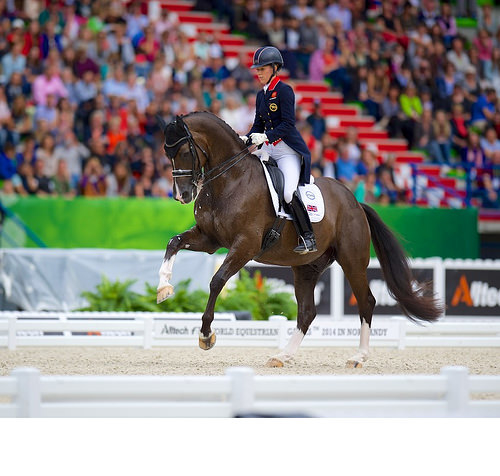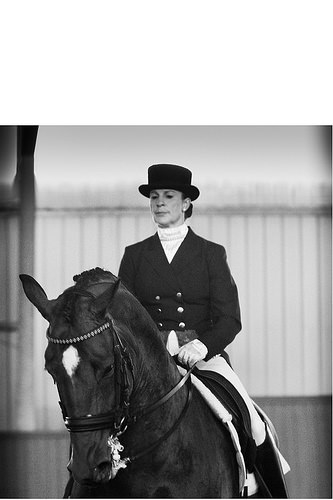
“Dressage… what on earth is dressage?” Any Canadian dressage rider can agree that practically every time we mention our sport to someone it must be followed by a lengthy explanation, an explanation that is usually received with confusion. I usually just deliver a very quick, unsophisticated description so as not to lose their attention mid-sentence. “Dressage is a fancy equestrian sport involving top hats and dancing horses.” Truthfully, to summarize dressage in a way that non-riders can understand is a challenging task, but here is my best attempt.
“Dressage is a fancy equestrian sport involving top hats and dancing horses,” according to Canadian Equestrian Pamela Menzies.
“Dressage” is a French term meaning, “training,” and can be traced back to the 17th Century Renaissance era. Dressage has been described as the highest form of training and is the platform for flat work in many other equestrian sports including show jumping and eventing. The goal of dressage riders is to enhance and develop the natural movement, balance, suppleness, athleticism, and obedience of the horse. High quality dressage has been likened to a ballet or dance between horse and rider. The horse gives the impression of doing the movements on his own accord, but the rider is discretely delivering aids (cues) to the horse through use of their legs, seat, and hands.
Modern dressage competitions range from very basic “training levels” all the way up to the Grand Prix (Olympic level). Riders and horses are asked to perform from memory a series of movements in a 60 x 20m flat arena marked with letters that indicate where movements should begin and end. Every movement is graded out of 10, with greater weight being placed on specific movements throughout the test. Scores from each segment of the test are added up and converted to a percentage of the total marks achievable. There is a general consensus that any score higher than 60% is a ‘good’ score, although certain wizards of dressage such as Charlotte Dujardin and her horse Valegro have been known to achieve scores upwards of 90% in the Grand Prix. The favorite event of a dressage show is the musical freestyle or “Kur.” In this event, riders exhibit their artistry and personal style to choreographed arrangements of the elements of a dressage test to music that is well suited to the horse’s movement and character.

Dressage is a game of patience and extended commitment. It consists of several thousands of hours of training and years to develop the necessary strength and resilience to enable the horse to perform very difficult movements with grace. Not to mention the time it takes for riders to truly begin mastering their technique. Crystal Kroetch, a Canadian Grand Prix dressage rider and Pan American Games silver medalist, often compares riding to juggling. The better you become as a rider, the more balls you need to be able to juggle. While basic riding requires you to juggle 2 or 3 balls, Grand Prix riders juggle about 50 at a time. Dressage is a never-ending process of learning for both horse and rider. It requires exceptional dedication, commitment, and patience but the satisfaction of learning to dance with a 1300 pound free spirit is unlike anything else in the world.
This is a guest post by Pamela Menzies a dressage rider and assistant trainer at Oxtoby Equine. When Pamela is not horseback riding, she is most likely to be found on Instagram at @symbiolaequestrian.
